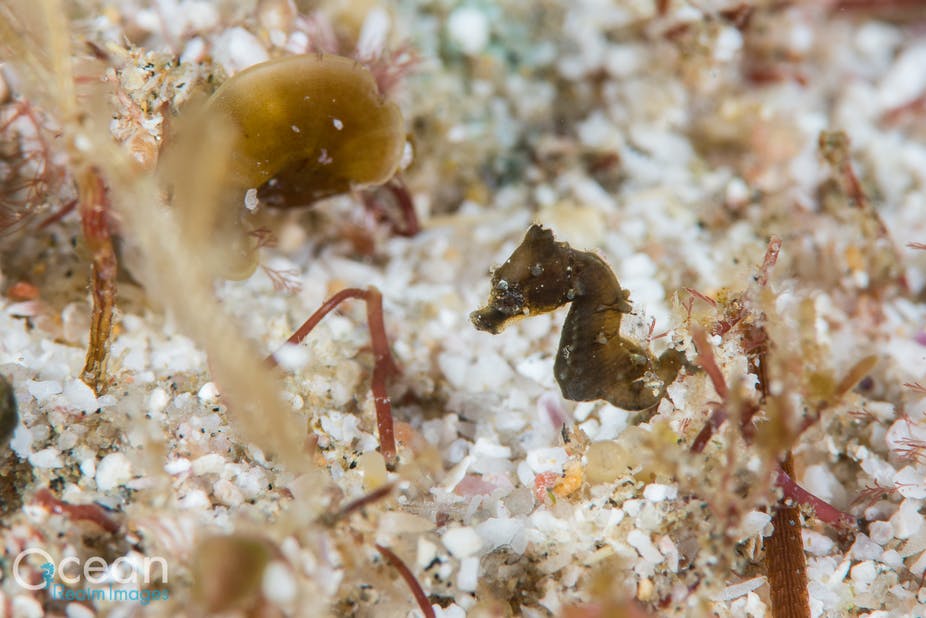New pygmy seahorse discovered in Africa

Researchers have found a new species: a pygmy seahorse about the size of a grain of rice off eastern South Africa, writes Douglas Main for National Geographic.
The finding shocked them because all seven species of pygmy seahorse, except for one in Japan, inhabit the Coral Triangle, a biodiverse region of more than two million square miles in the southwestern Pacific. This one lives 5,000 miles away, the first pygmy seahorse seen in all of the Indian Ocean and the continent of Africa.
“It’s like finding a kangaroo in Norway,” says Richard Smith, a marine biologist based in the United Kingdom and co-author of a new study on the species, known as the African or Sodwana Bay pygmy seahorse. The second name refers to the location where it was found, a popular scuba-diving spot close to the Mozambique border.
The new species looks somewhat similar to other pygmy seahorses, except that it has one set of spines on its back that have sharp, incisor-like points on the tips, says co-author Graham Short, an ichthyologist at the California Academy of Sciences and the Australian Museum in Sydney. In contrast, the other similar pygmy seahorses have flat-tipped spines, according to National Geographic.
“We really don’t know what these spines are used for,” Short says. “Many species of seahorses in general are spiny, so their presence could be possibly due to sexual selection – the females may prefer spinier males.”
Dive instructor Savannah Nalu Olivier first stumbled upon the creature in Sodwana Bay in 2017, while examining bits of algae on the seafloor. The bay is known for having many species of rare fish, sharks, and sea turtles.
Like other pygmy seahorses, the African version is thought to eat tiny copepods and crustaceans. It also is well camouflaged to match its surroundings.
Read the full article online.










